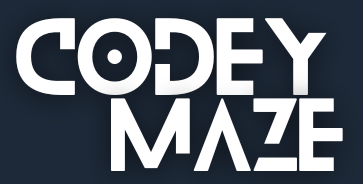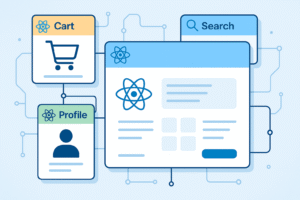A Large Language Model(LLM) is a type of artificial intelligence (AI) that has been trained on large amounts of data to understand and generate human-like language. These models are capable of tasks such as text completion, language translation, and even generating creative content like poems or stories. GPT-3 which stands for “Generative Pre-Trained Transformer-3” is an example of a large language model developed by OpenAI.
There are several classes of large language models that are suited for different types of use cases:
Encoder only: These models are typically suited for tasks that can understand language, such as classification and sentiment analysis. Examples of encoder-only models include BERT(Bidirectional Encoder Representations from Transformers).
Decoder only: This class of models is extremely good at generating language and content. Some use cases include story writing and blog generation. Examples of decoder-only architecture include GPT-3(Generative Pre-trained Transformer 3).
Encoder-Decoder: These models combine the encoder and decoder components of the transformer architecture to both understand and generate content. Some use cases where this architecture shines include translation and summarisation. Examples of encoder-decoder architecture include T5(text to text transformer).

At the basic level, LLMs are built on machine learning techniques and use a type of machine learning called deep learning. Deep learning works on the concept of neural networks. As the human brain constructed of neuron’s that connect and send signals to other neuron’s, the neural networks in deep learning are constructed of network nodes that connect and send signals to each other.
There are typically three layers in a neural network:
Input layer: This is where the neural network receives information or input. In the context of language models, like GPT-3, you can think of this layer as the starting point where the model takes in words or tokens as its input.
Hidden layer: The hidden layer is where the magic happens. Neurons in this layer process the input data, capturing patterns and relationships between different elements. Its like your brain making connections and understanding complex aspects and details of information.
Output layer: The output layer produces the final result or prediction based on the processed input. For a language model, this could be generating a response, completing a sentence, or predicting the next word in a sequence.
Some Popular Large Language Models (LLMs)
Lets take a look at some popular large language models(LLMs)
GPT-3 (Generative Pre-trained Transformer 3) – ChatGPT is a large language model that can generate text, translate languages, write different kinds of creative content, and answer your questions in an informative way and it is also able to learn and adopt to new information. It is trained on a massive dataset of text and code available on the internet and it has approximately about 175 billion parameters.
BERT (Bidirectional Encoder Representations from Transformers) – Developed by Google, BERT is another popular LLM that has been trained on a massive corpus of text data. It can understand the context of a sentence and generate meaningful responses to questions.
XLNet – This LLM developed by Carnegie Mellon University and Google uses a novel approach to language modelling called “Permutation Language Modelling”. It has achieved state-of-the-art performance on language tasks, including language generation and question answering.
T5 (Text to Text Transfer Transformer) – T5, developed by Google is trained on a variety of language tasks and can perform text to text transformations, like translating text to another language, creating a summary, and question answering.
RoBERTa (Robustly Optimised BERT Pre-training Approach) – Developed by Facebook AI Research, RoBERTa is an improved BERT version that performs better on several language tasks.
How LLMs are Trained?
Training Large Language Models (LLMs) is a complex process that involves several steps and considerations. Here’s a detailed and concise explanation of how LLMs are trained:
Data Collection
The first step involves gathering a diverse and extensive dataset from various sources, including books, articles, websites, and more. Then preprocessing the data to remove noise, correct errors, and ensure a consistent format.
Tokenization
This involves break down the text into smaller units called tokens, which can be as short as one character or as long as one word. Tokenization helps the model understand and process language at a more granular level.
Model Architecture
Next step requires selection of a suitable architecture for the language model. State-of-the-art models like GPT (Generative Pre-trained Transformer) often use a transformer architecture.
Initialization
Now randomly initialize the model’s parameters (weights and biases). This step is crucial as it sets the starting point for the learning process.
Training Objective – Language Modeling
Next step involves train the model to predict the next word or token in a sequence given the context of previous words. The objective is to maximize the likelihood of the correct next token, expressed as maximizing the probability distribution of the next token given the context.
Backpropagation and Optimization
Next use backpropagation to calculate gradients of the model’s parameters with respect to the training objective. Apply optimization algorithms, such as stochastic gradient descent (SGD), to update the model’s parameters in the direction that minimizes the training objective.
Mini-Batch Training
Divide the dataset into smaller batches to make training more computationally efficient. The model processes and updates its parameters based on these mini-batches rather than the entire dataset at once.
Iterations
Next conduct multiple iterations where the model processes the entire dataset. Each iteration refines the model’s understanding of language.
Hyperparameter Tuning
Adjust hyperparameters like learning rate, batch size, and model architecture details to optimize training performance.
Validation and Fine-Tuning
Now monitor the model’s performance on a separate validation dataset to ensure it generalizes well to unseen data and fine-tune the model based on validation results, if necessary.
Model Evaluation
Assess the trained model on test datasets to evaluate its performance and generalization to new, unseen data.
Final Notes
In summary, a Large Language Model (LLM) is a sophisticated artificial intelligence system designed to understand and generate human-like text. These models, exemplified by GPT-3, are trained through a comprehensive process of unsupervised learning, involving several crucial steps.



